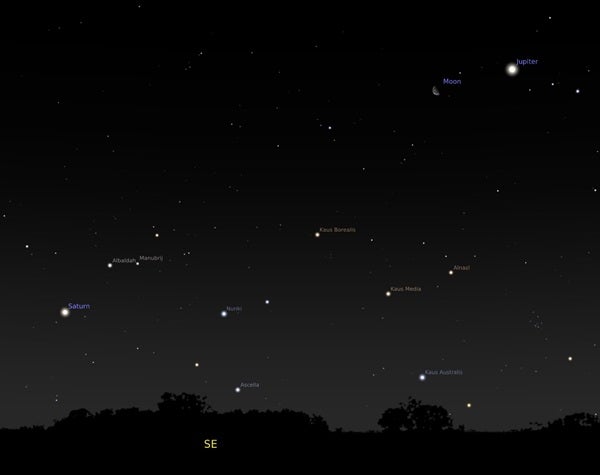Since last week’s Full Moon, Earth’s satellite has been rising later every night. You now have to wait until after midnight local daylight time to see Luna cresting above the southeastern horizon. But for those who like to get up early, or stay up really late, the Moon offers a couple of treats these next few mornings.
On March 27, the Moon rises in the vicinity of brilliant Jupiter. The two come up shortly before 2 a.m. and then climb higher as morning progresses. The planet appears about 4° to the waning gibbous Moon’s right, and the two fit nicely in a single field of view through binoculars. You won’t mistake magnitude –2.2 Jupiter for any other celestial object — it’s the brightest point of light in the night sky with the exception of Venus, which won’t rise until morning twilight has started.
The Moon moves eastward relative to the background stars at an average of 13° every day. In just two days, on the morning of March 29, it has crossed the gap from Jupiter to Saturn and joins the ringed planet before dawn. The two objects rise before 3:30 a.m. local daylight time with Saturn 3° to the Moon’s upper right. Although magnitude 0.6 Saturn shines brightly, it appears some 13 times fainter than Jupiter. The Moon’s phase has dwindled noticeably since its encounter with Jupiter, and now appears as a fat crescent.
For more quick and easy observing tips, check out The sky this week for March 22 to 31.










